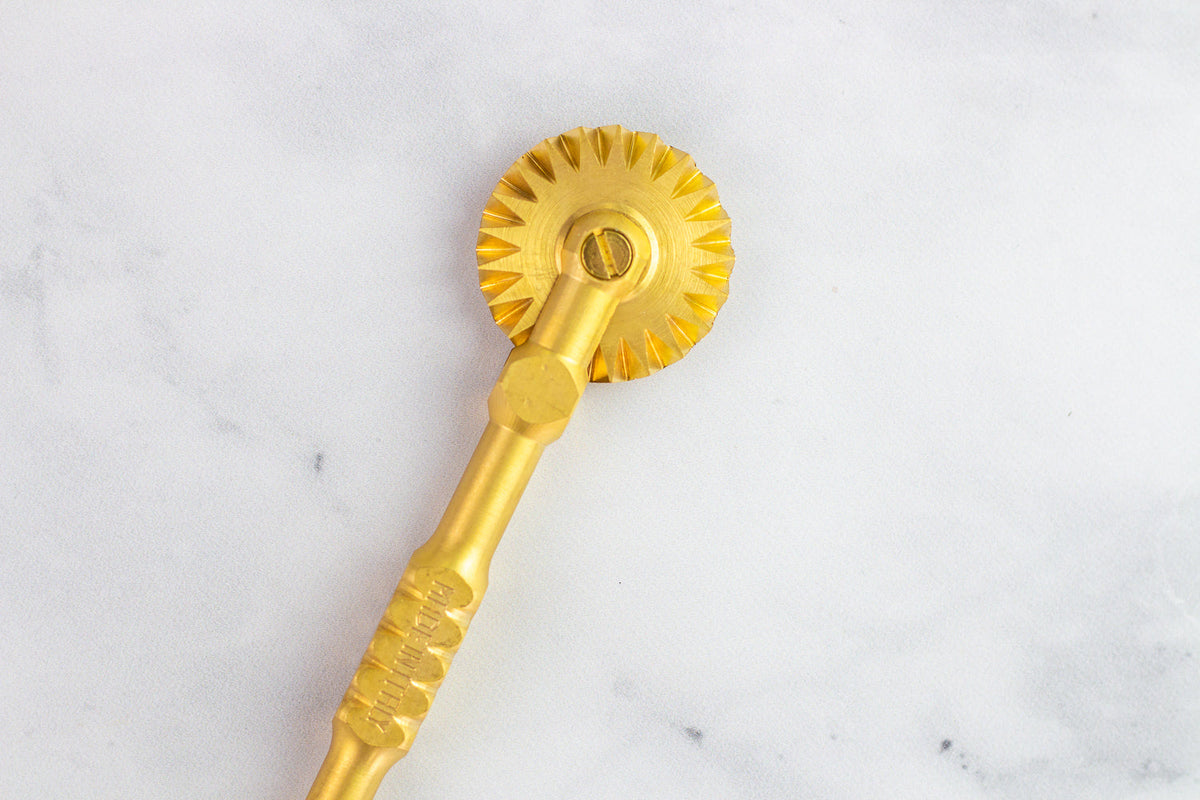
Three Reasons Why We Love Brass Pasta Tools
|
|
Time to read 2 min
|
|
Time to read 2 min
Ever wondered what the difference is between brass pasta tools and those made of stainless steel or aluminum?
If you’ve shopped around for ravioli stamps or pasta wheel cutters, you may have noticed that there are a lot of tools made of brass. They’re beautiful – and yes – cost a tad more than pasta tools made of other materials.
So, are brass pasta tools just for looks? Well, yes and no.
While these shiny tools may seem like pure pasta snobbery, there are actually good reasons to use them, especially if you’re as passionate about making fresh pasta as we are! In fact, we might be as bold as brass to say we prefer to carry them in our shop because we believe they’re superior and yield better pasta results.
Here’s why.
With its shimmering golden appearance, brass has been used for centuries to create decorative objects, from doorknobs to jewelry. But its lustrous appearance is not the only reason it’s widely used. Thanks to its low melting point, malleability, durability, and conductivity, it’s also a fantastic material for many other practical tools and utensils, such as locks, hinges, valves, musical instruments, and yes, you guessed it, pasta tools!
Brass has higher malleability than other metals. This means that when a manufacturer is creating pasta tools molded out of brass, they are able to get a much more precise mold cut. Moreover, brass has a good amount of weight to it. While this might sound like a negative quality, it’s a useful feature when cutting out pasta: the brass naturally presses down on the dough with little effort, leaving a more defined and even cut.
There’s a reason why you find brass objects from thousands of centuries ago in museums: they can last forever! Brass is considered an alloy of copper and zinc (who remembers their periodic table elements?), two materials that are incredibly durable and strong. Pasta tools made out of brass will last a lifetime (and probably more) and withstand many pasta making sessions.
Another reason why we prefer brass tools? Simply put, they’re beautiful! As passionate Italian cooks, we love having tools that are both functional and pretty to look at. And we have no doubt that we’ll pass them down to our children and grandchildren to use for years to come.
We should note that brass does tarnish slightly and lose its luster over time, but it’s nothing that a quick clean can’t fix. To clean brass tools, take a clean rag and dampen in a mixture of water and lemon juice, or water and baking soda. Squeeze out excess water and gently rub the brass to clean off any dough or flour stuck to the surface. Allow tools to dry in a cool, ventilated place. Note: never run brass through the dishwasher, and do not use dish soap!

